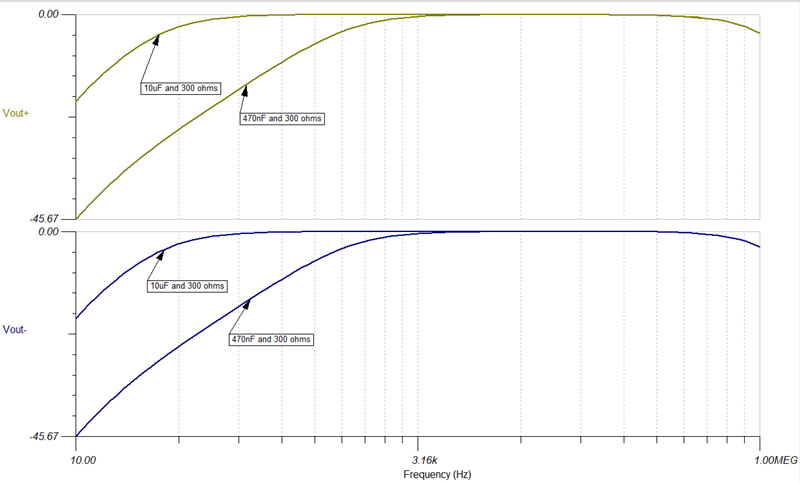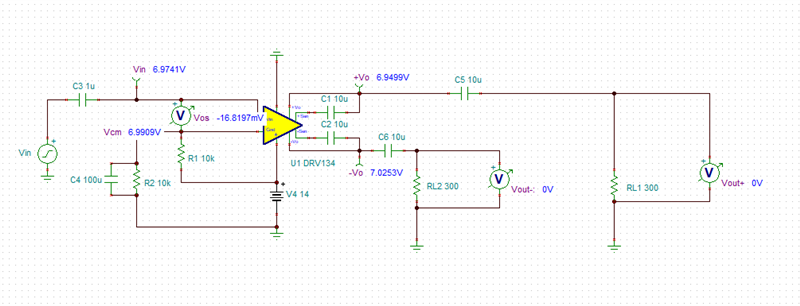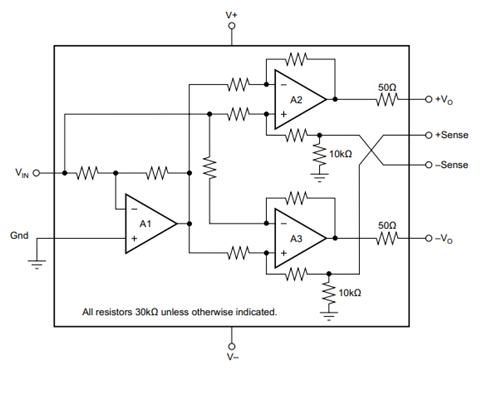Other Parts Discussed in Thread: TLE2426
Hi ,
I would like to know some parameters of DRV135UA, see below questions:
1. The minimum single power supply of V+ (Pin 6 ) and V-(Pin 5) connect to GND?
2. Does single Power of V+ (V-(Pin 5) connect to GND) can support 5V or 14V ?
3. Does Vin need to have a DC bias ? What's the DC bias level of Vin needed ? Can it be a half divided of V+
See attached schematic as well.
Thanks!
TT_Chin










